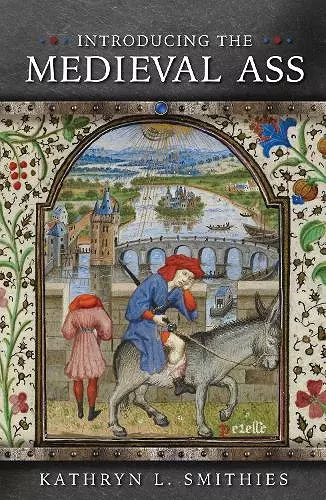Introducing the Medieval Ass
Format:Paperback
Publisher:University of Wales Press
Published:1st Sep '20
Currently unavailable, and unfortunately no date known when it will be back

• This is the first book dedicated to the medieval ass • It appeals to a multi-Audience: interested lay readership; accessible, introductory and undergraduate level book; scholar • This book explains how the medieval ass was an arse, an idiot, a violent hot-tempered sexed-up brute that ate the balls of its own male offspring. Conversely, the ass was also a humble, patient, loyal, hard-working Christian animal (marked with a cross) that Christ rode into Jerusalem. These paradoxical qualities are explored in this book and open up a wealth of information on how people in the Middle Ages viewed the ass, not just as a simple beast of burden, but also as a figure to warn and to educate, to expose human failings and praise the divine. • Introducing the Medieval Ass reveals medieval attitudes to animals, to people, and to the divine, making it an excellent way to approach medieval cultural and animal studies.
Introducing the Medieval Ass considers the fascinating ways that medieval people understood the ass, or donkey. A beast of burden and metaphor for human behaviour, medieval authors used the ass’s assumed traits – irrationality, humility, stubbornness, sexual perversion – to educate, entertain, and enthral.Introducing the Medieval Ass presents a lucid, accessible, and comprehensive picture of the ass’s enormous socio-economic and cultural significance in the Middle Ages and beyond. In the Middle Ages, the ass became synonymous with human idiocy, a comic figure representing foolish peasants, students too dull to learn, and their asinine teachers. This trope of foolishness was so prevalent that by the eighteenth century the word ‘ass’ had been replaced by ‘donkey’. Economically, the medieval ass was a vital, utilitarian beast of burden, rather like today’s ubiquitous white van; culturally, however, the medieval ass enjoyed a rich, paradoxical reputation. Its hard work was praised, but its obstinacy condemned. It exemplified the good Christian, humbly bearing Christ to Jerusalem, but also represented Sloth, a mortal sin. Its potent sexual reputation – one literary ass had sex with a woman – was simultaneously linked to sterility and, to this day, ‘ass’ and ‘arse’ remain culturally-connected homophones. 'In the medieval world, the ass’s reputation – sacred or profane, derided or acclaimed – was codified in fact, fiction and image. However, unusual its binary nature may seem to the modern-day reader, paradoxical rhetoric was a common feature in medieval beast genres, and the fact that the ass had contesting reputations offers multiple avenues for analysis.' - Read more about this on page 3 of the Booklaunch https://edition.pagesuite-professional.co.uk/html5/reader/production/default.aspx?pubname=&edid=eacd7c66-df5c-4335-86ee-cad05c826bda
A must read for anyone with an interest in medieval history and/or asses! * The Birdbooker Report *
"Reliably-researched and well-written presentations of iconic animals as they were understood – both as creatures in and of themselves, and as metaphors, characters, and in other representative forms – by the people of the Middle Ages." * The Well-Read Naturalist *
ISBN: 9781786836229
Dimensions: unknown
Weight: unknown
128 pages